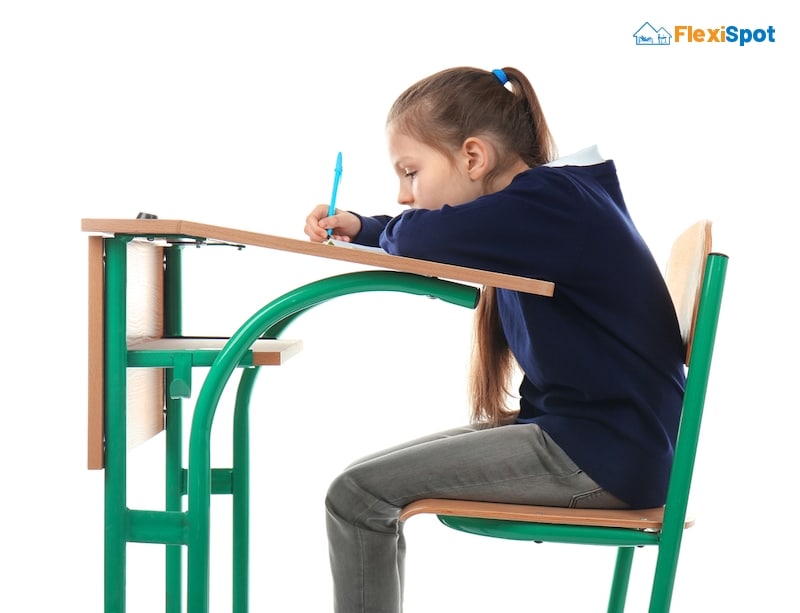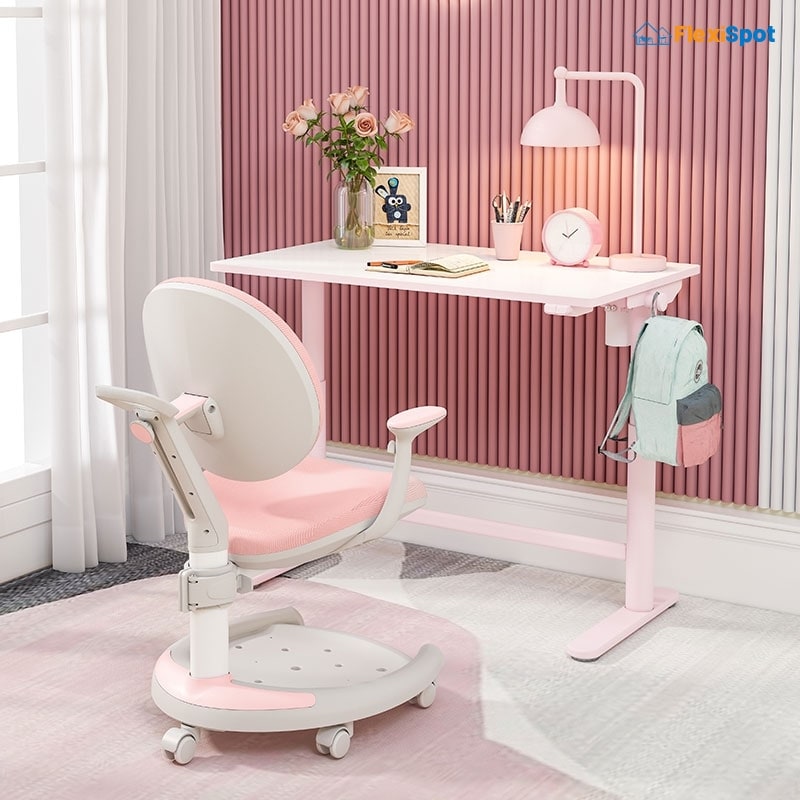With an increasing awareness about the consequences of bad posture and poor ergonomics, most employers have modified their workplaces to ensure that the physical and psychological well-being of their employees isn’t compromised. So, most of working adults have got their ergonomics-related problems sorted. But what about children? Have you ever given thought to whether poor ergonomics can have any adverse consequences for children?
The answer to this question is – poor ergonomics pose a much bigger risk for children than adults. At least adults know what the consequences are, understand the science, and can take the right precautionary measures, but that’s not the case with children.
Children today are more exposed to technology than ever. Back in the day, when we got assignments for homework, we were supposed to refer to our textbooks. Today, Google has got all the answers. We used to spend hours playing the black and white brick game. However, today, children play high-resolution graphical games on their smart devices. Our favorite leisure activity was playing Mario on the video game console, but today, children play highly interactive games on the computer, PlayStation, and Xbox. Exposure to screens isn’t the only risk factor. A bigger and more harmful factor is the poor posture children sit in for long hours playing games or using a computer for school work.
How are Poor Ergonomics Affecting Children?
You’ll be surprised to know that more and more children have started to complain about back and shoulder pain, and this is a consequence of sitting in front of computer screens for long hours in the wrong posture. Back and shoulder pain is the consequence that has started to present itself today, but if you look at the bigger picture, if you don’t correct your child’s posture today, it’ll lead to musculoskeletal damage (MSD) in the long run.
All the time your child is sitting in an incorrect posture, they’re putting excessive stress and pressure on their muscles and bones, especially the lower back region. Over time, this will lead to damage to the musculoskeletal system, which can become very painful for your child – and of course, for you too.
Musculoskeletal damage isn’t the only way poor ergonomics are affecting your child. Posture is just one of the many aspects of ergonomics. Excessive exposure to the screen (computer, laptop, and smart devices) and poor lighting in your children’s study room puts extensive strain on their eyes which can lead to the weakening of eyesight. One of the first signs that the eyes are exposed to more strain than they can bear is that your child will start complaining about a headache.
If you don’t address this problem today, your child will suffer in the future, which is the last thing you would want.
Why are Children More Exposed to Poor Ergonomics?
You may think you’re exposed to poor ergonomics at the office, but if you look at it closely, you’ll realize your child is much more exposed to poor ergonomics and is at a much higher risk of suffering from the consequences.
You already know how sitting in front of the computer in a bad posture is affecting them. But that’s not the only time your child is exposed to poor ergonomics, even schools don’t consider the importance of ergonomics for children. There are the same desks and chairs for all the children. The schools don’t consider the fact that all children are of a different physique; some may need a bigger chair to sit on, and some may be too tall or too short for the height of the desk in classrooms. Imagine the level of risk your child is exposed to, first at school and then at home. It’s like your child is living in an environment with poor ergonomics all day long!
This is one of the major reasons why you need to step in right now and provide your child with an environment where your child’s physical well-being isn’t compromised.
Ergonomics Tips for Parents
You may want to know how you can ensure that your child gets an ergonomic environment at home at least. Trust us when we say it’s not as difficult as it sounds. Let’s have a look at some tips that’ll help you design an ergonomic environment for your child and ensure that they don’t get affected due to bad posture and poor ergonomics.
Get a Rightly-Sized Chair for Your Child
Let’s face it. You can’t cut down on computer usage, especially when they need the internet for their homework and assignments. So, what you can do is get a chair that’s just the right size for them. The chair you use will be too big for them, and they’ll have to slump forward to reach the keyboard, which is exactly what we don’t want. Choose a chair that has an adjustable height feature and a flexible and comfortable backrest. Ergonomic Study Chair for Kids S05 seems like a great choice here. Also, make sure the seat isn’t too big for them. When the chair is of the perfect size, your child will be able to sit back in the chair while using the computer. They won’t have to slump or lean forward.
Arrange a Footrest
Your child should sit in their chair with the back upright and feet placed flat on the floor in front of the chair. If they’re sitting in any other posture, you’ve got to make them sit correctly. If their feet are dangling in the air, arrange a footrest for them so that they can rest their feet flat on it. The knees must be in-line with their hips. If not, the underside of the knees will start to hurt, the vessels will get compressed, and the blood flow will be hindered.
Buy a Chair with Adjustable Armrests
The elbows of your child should be at a right angle to the body. The armrests of the chair will not always be at the ideal level to facilitate correct elbow placement. To ensure your child’s elbows are well-rested and supported, buy a chair with adjustable armrests so that you can adjust them according to your child. It’ll be great if you’ve more than one kid. You’ll have to buy just one chair that all your children can use without compromising on their posture.
Buy a Computer Table with Moveable Keyboard Tray
The keyboard may be too far away from your child’s reach, and to be able to use it, your child will have to sit at the edge of their chair. That’s the posture you don’t want your child to be sitting in. Therefore, buy a computer table that has a moveable keyboard tray. Your child can pull the tray out enough to bring the keyboard in their reach. They won’t have to stretch their body or change their posture to be able to use the keyboard comfortably.
Make Sure the Height of Their Study Table is Suitable
If the height of the study table is too short, your child will have to bend way too much over their books. If the table is too tall, the child will have to stretch the back and keep their neck raised. Both of these sitting positions are incorrect. Either get a study table made to your specifications or buy a study table whose height can be adjusted.
Make Sure Your Child Takes Breaks
It’s easy to lose track of time when you’re doing something that you enjoy. The same is the case with children. They won’t realize they have been using the computer for 2 hours straight. Make sure your child is taking breaks in between. They shouldn’t be sitting in the same posture for too long. Whether they’re using the computer or doing their homework on their study table, taking breaks to walk around and stretch a bit is extremely important.
Ensure Adequate Lighting in the Computer and Study Room
Poorly lit computers and study rooms will put excessive strain on the eyes. Make sure that the room where you’ve placed the computer and your child’s study room, the places where they spend the most time, are well lit. Make sure the lights are sufficient, not too dim or too bright. Lights that are too dim or too bright both put a strain on the eyes and are equally bad for your child.
After all, a child is a child, and it falls onto you to provide them with the best ergonomics at home. It may feel overwhelming right now, but once you get to it, you’ll find it easier than you thought. A little effort today will go a long way for your child!



